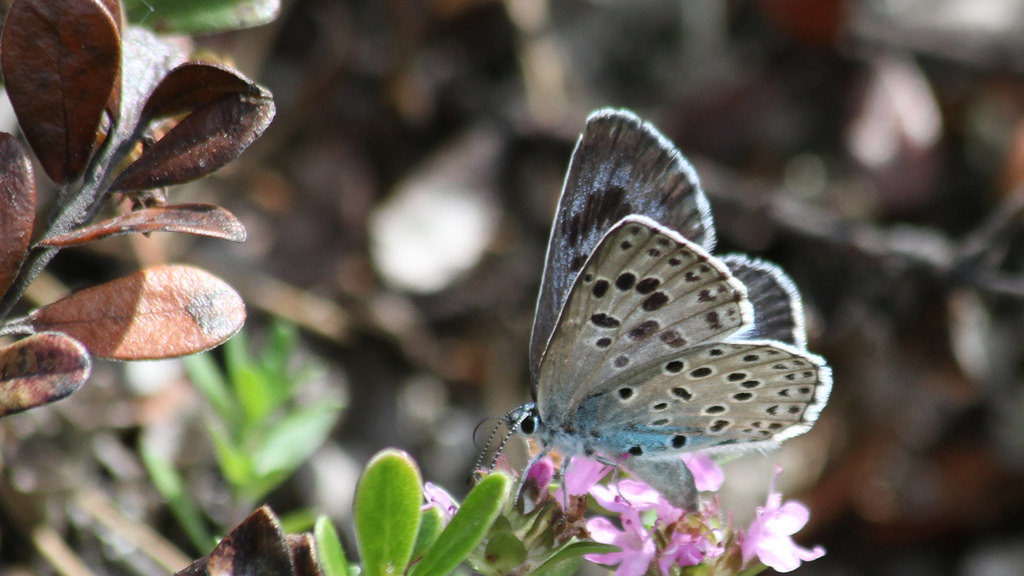A rare and enigmatic species, the large blue butterfly is one of two insects to be awarded European Protected Species status in the UK. The large blue has always been elusive, and even disappeared from UK shores in the late 1970s. However, the species was successfully reintroduced in a number of sites in south-west England and it is steadily increasing as reported in The State of the UK’s Butterfly 2015 report, published by the charity Butterfly Conservation.
The large blue is the UK’s largest butterfly and is often identified by a row of black spots on the upper forewing. It has a unique lifecycle which relies upon red ants (Myrmica sabuleti) and wild thyme. Adult large blue butterflies lay their eggs in the flower buds of wild thyme, providing the larvae with a food source once they hatch. The larvae will then drop to the ground and begin secreting a sweet smelling substance which attracts red ants. The ants will pick up the larvae and bring it back to their nests where, unbeknownst to the ants, the larvae will start feeding on ant grubs. The larvae will happily stay in the ant’s nest, feasting away, until it is ready to emerge the following May.
Large blue butterflies receive full protection under UK law –Wildlife and Countryside Act 1981 (as amended). They are a species of principle importance in England under Section 41 of the NERC act as well as being European Protected Species.
Image: Peter Von Bagh











